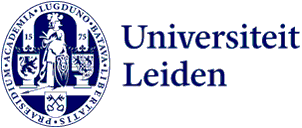
Cultural contacts between ‘East’ and ‘West’ in the early Middle Ages
With the help of the JEDI fund, Fatima al Moufridji and Thijs Porck went in search of cultural contacts between early medieval England, Northern Africa, and the Middle East. Together they made four knowledge clips that can now be seen on YouTube.
During her lectures on the Old English language and culture of the early Middle Ages, Fatima al Moufridji became captivated by a special coin: a gold coin bearing the name of an 8th-century king “Offa Rex” (Offa of Mercia; 757-796) and an inscription in Arabic, part of the shahadah, the Islamic confession of faith. A remarkable combination, especially if you think that the ‘Dark Ages’ mainly featured isolated mono-cultural societies and/or violence between Christians and Muslims during the Crusades. This coin disproves that stereotypical image and al Moufridji was curious whether she could find more examples of cultural contact between ‘the West’ and ‘the East’. Together with her Old English lecturer, Thijs Porck, she wrote a research proposal for the Justice, Equity, Diversity and Inclusion (JEDI) initiative of the Faculty of Humanities. The project was assigned and, in collaboration with Thomas Vorisek of the Educational Center Online Learning (ECOLe), four knowledge clips were made. These videos appeared on YouTube last month.

Cultural contact
In the four knowledge clips, al Moufridji and Porck discuss all kinds of objects, texts and individuals that showcase a rich palette of cultural contacts between early medieval England, Northern Africa and the Middle East: from Arabic texts describing England to scholars who travelled from Northern Africa and modern-day Turkey to England. They also discuss a variety of Old English texts that discuss the ‘Orient’ or contain scientific knowledge originating from the Middle East or Northern Africa. They do this with the necessary humour and playfulness, but not without losing sight of the higher goal: to show that people in the early Middle Ages were not as culturally isolated as people sometimes think.
Video 1: Traces of trade between early medieval England and the Middle East: Coins, cloth and condiments
What are all those Arabic coins doing in early medieval England? What did the Anglo-Saxons use exotic silk for and where did they get their spices from? This video discusses some traces of trade between the East and the West in the early Middle Ages.
Due to the selected cookie settings, we cannot show this video here.
Watch the video on the original website orVideo 2: Early medieval encounters: Travelling Arabs and Anglo-Saxons
Did you know that people travelled long distances in the early Middle Ages? This video discusses a tenth-century Arabic description of Britain, St. Willibald’s travels through the Middle East, and some professional tips on using a calabash!
Due to the selected cookie settings, we cannot show this video here.
Watch the video on the original website orVideo 3: Old English imaginations of the East: The other texts in the Beowulf manuscript
The Old English poem Beowulf is a world classic, but the other Old English texts in the sole manuscript in which Beowulf has been handed down are also worth studying. They give us an idea of how the Anglo-Saxons imagined areas such as Northern Africa and the Middle East.
Due to the selected cookie settings, we cannot show this video here.
Watch the video on the original website orVideo 4: Anglo-Saxon learning and intellectual import from the Middle East and Northern Africa
The inspiring story of Theodore and Hadrian, two scholars from Northern Africa and the Middle East, who found their way to early medieval England. In addition, the origins of various medicinal and fortune-telling texts in Old English are discussed.
Due to the selected cookie settings, we cannot show this video here.
Watch the video on the original website or